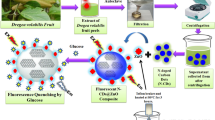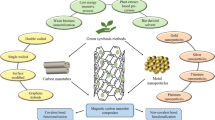Abstract
This study is devoted to the problem of controlling the removal of carbon nanocomplexes from the body via neural networks. We model the renal excretion of nanocomplexes based on carbon dots (CD) that deliver anticancer drug—doxorubicin (Dox). Optical absorption and fluorescence spectra of nanocomposites containing CD and Dox in urine were used to model the process of elimination of nanocomposites components from the body. These spectral data were decoded with multilayer perceptrons to determine CD and Dox concentrations in the studied samples. To increase the accuracy of monitoring the excretion of CD and Dox with urine, principal component analysis was additionally used. Our sensing technique allows controlling the excretion of CD and Dox with 43.8 and 20.9 µg/L mean absolute errors, which are comparable to similar values of analogues. However, the proposed method can be used for simultaneous rapid monitoring of numerous substances, while most CD-based sensors in literature are calibrated to measure only one or two parameters. The obtained results have great value for the analysis of the parameters of nanostructured objects in microvolumes, particularly for monitoring in microfluidic devices. Combination of microfluidics and the use of machine learning methods shows a future innovative approach for conduction massive biological material study and implement smart decision making systems in support of clinical diagnostics.







Similar content being viewed by others
REFERENCES
Alsuliman, T., Humaidan, D., and Sliman, L., Machine learning and artificial intelligence in the service of medicine: Necessity or potentiality?, Curr. Res. Transl. Med., 2020, vol. 68, pp. 245–251.
Noorbakhsh, J., Chandok, H., Karuturi, R.K.M., and George, J., Machine learning in biology and medicine, Adv. Mol. Pathol., 2019, vol. 2, pp. 143–152.
Carleo, G., Cirac, I., Cranmer, K., Daudet, L., Schuld, M., Tishby, N., and Zdeborová, L., Machine learning and the physical sciences, Rev. Mod. Phys., 2019, vol. 91, pp. 045002.
Gerdova, I., Dolenko, S., Dolenko, T., Churina, I., and Fadeev, V., New opportunity solutions to inverse problems in laser spectroscopy involving artificial neural networks, Izv. Akad. Nauk, Ser. Fiz., 2002, vol. 66, pp. 1116–1124.
Butler, K.T., Davies, D.W., Cartwright, H., Isayev, O., and Walsh, A., Machine learning for molecular and materials science, Nature, 2018, vol. 559, pp. 547–555.
Vandenginste, B.G.M., Massart, D.L., Buydens, L.M.C., De Jong, S., Lewi, P.J., and Smeyers-Verbeke, J., Handbook of Chemometrics and Qualimetrics, Amsterdam, Netherlands: Elsevier, 1998.
Dolenko, S.A., Dolenko, T.A., Fadeev, V.V., Gerdova, I.V., and Kompitsas, M., Time-resolved fluorimetry of two-fluorophore organic systems using artificial Neural Networks, Opt. Commun., 2002, vol. 213, pp. 309–324.
Dolenko, T.A., Burikov, S.A., Vervald, A.M., Vlasov, I.I., Dolenko, S.A., Laptinskiy, K.A., Rosenholm, J.M., and Shenderova, O.A., Use of neural network algorithms for optical imaging of fluorescent biomarkers based on carbon nanoparticles, JBO, 2014, vol. 19, pp. 117007.
Barth, C. and Becker, C., Machine learning classification for field distributions of photonic modes, Commun. Phys., 2018, vol. 1, pp. 1–11.
Närhi, M., Salmela, L., Toivonen, J., Billet, C., Dudley, J.M., and Genty, G., Machine learning analysis of extreme events in optical fibre modulation instability, Nat. Commun., 2018, vol. 9, pp. 1–11.
Zakharov, V.E. and Ostrovsky, L.A., Modulation instability: The beginning, Physica D, 2009, vol. 238, pp. 540–548.
Sumpter, B.G. and Noid, D.W., Potential energy surfaces for macromolecules. a neural network technique, Chem. Phys. Lett., 1992, vol. 192, pp. 455–462.
Lin, X., Si, Z., Fu, W., et al., Intelligent identification of two-dimensional nanostructures by machine-learning optical microscopy, Nano Res., 2018, vol. 11, pp. 6316–6324.
Tanaka, K., Hachiya, K., Zhang, W., Matsuda, K., and Miyauchi, Y., Machine-learning analysis to predict the exciton valley polarization landscape of 2D semiconductors, ACS Nano, 2019, vol. 13, pp. 12687–12693.
He, C., Wu, X., Zhou, J., Chen, Y., and Ye, J., Raman optical identification of renal cell carcinoma via machine learning, Spectrochim. Acta, Part A, 2021, vol. 252, pp. 119520.
**, E.H., Lee, D., Bae, J.H., Kang, H.Y., Kwak, M.S., Seo, J.Y., and Kim, J.S., Improved accuracy in optical diagnosis of colorectal polyps using convolutional neural networks with visual explanations, Gastroenterology, 2020, vol. 158, pp. 2169–2179.
Sunny, S., Baby, A., James, B.L., Balaji, D., NV, A., Rana, M.H., and Kuriakose, M.A., A smart tele-cytology point-of-care platform for oral cancer screening, PLoS One, 2019, vol. 14, pp. e0224885.
Ullah, R., Khan, S., Ali, H., Chaudhary, I.I., Bilal, M., and Ahmad, I., A comparative study of machine learning classifiers for risk prediction of asthma disease, Photodiagn. Photodyn. Ther., 2019, vol. 28, pp. 292–296.
Wang, X., Wang, Z., Weng, J., Wen, C., Chen, H., and Wang, X., A new effective machine learning framework for sepsis diagnosis, IEEE Access., 2018, vol. 6, pp. 48300–48310.
Arima, A., Tsutsui, M., Washio, T., Baba, Y., and Kawai, T., Solid-state nanopore platform integrated with machine learning for digital diagnosis of virus infection, Anal. Chem., 2020, vol. 93, pp. 215-227.
Peiffer-Smadja, N., Rawson, T.M., Ahmad, R., Buchard, A., Georgiou, P., Lescure, F.X., Birgand, G., and Holmes, A.H., Machine learning for clinical decision support in infectious diseases: a narrative review of current applications, Clin. Microbiol. Infect., 2020, vol. 26, pp. 584–595.
**tao, X., Liming, Y., Yufei, L., Chunyan, L., and Han, C., Noninvasive and fast measurement of blood glucose in vivo by near infrared (NIR), Spectrochim. Acta, Part A, 2017, vol. 179, pp. 250–254.
Guevara, E., Torres-Galván, J.C., Ramírez-Elías, M.G., Luevano-Contreras, C., and González, F.J., Use of Raman spectroscopy to screen diabetes mellitus with machine learning tools, Biomed. Opt. Express., 2018, vol. 9, pp. 4998–5010.
Ellis, D.I., Broadhurst, D., Kell, D.B., Rowland, J.J., and Goodacre, R., Rapid and quantitative detection of the microbial spoilage of meat by Fourier transform infrared spectroscopy and machine learning, Appl. Environ. Microbiol., 2002, vol. 68, pp. 2822–2828.
Wu, A.C.-Y. and Rifkin, S.A., Aro: A machine learning approach to identifying single molecules and estimating classification error in fluorescence microscopy images, BMC Bioinf., 2015, vol. 16, pp. 1–8.
Dolenko, T.A., Burikov, S.A., Vervald, E.N., Efitorov, A.O., Laptinskiy, K.A., Sarmanova, O.E., and Dolenko, S.A., Improvement of reliability of molecular DNA computing: solution of inverse problem of Raman spectroscopy using artificial neural networks, Laser Phys., 2017, vol. 27, pp. 025203.
Sarmanova, O.E., Laptinskiy, K.A., Khmeleva, M.Y., Burikov, S.A., Dolenko, S.A., Tomskaya, A.E., and Dolenko, T.A., Development of the fluorescent carbon nanosensor for pH and temperature of liquid media with artificial neural networks, Spectrochim. Acta, Part A, 2021, vol. 258, pp. 119861.
Ghosh, A., Roth, D.J., Nicholls, L.H., Wardley, W.P., Zayats, A.V., and Podolskiy, V.A., Machine learning-based diffractive image analysis with subwavelength resolution, ACS Photonics, 2021, vol. 8, pp. 1448–1456.
Sarmanova, O.E., Laptinskiy, K.A., Burikov, S.A., Isaev, I.V., Dolenko, T.A., and Dolenko, S.A., Determination of heavy metal ions concentration in aqueous solutions using adaptive data analysis methods, Proc. SPIE, 2020, vol. 11354, pp. 113540L-1–113540L-9.
Valensise, C.M., Giuseppi, A., Vernuccio, F., De la Cadena, A., Cerullo, G., and Polli, D., Removing non-resonant background from CARS spectra via deep learning, APL Photonics, 2020, vol. 5, pp. 061305.
Brunel, B., Alsamad, F., and Piot, O., Toward automated machine learning in vibrational spectroscopy: Use and settings of genetic algorithms for pre-processing and regression optimization, Chemometr. Intell. Lab., 2021, vol. 219, pp. 104444.
Helin, R., Indahl, U.G., Tomic, O., and Liland, K.H., On the possible benefits of deep learning for spectral preprocessing, J. Chemom., 2022, vol. 36, pp. e3374.
Rizzuto, V., Mencattini, A., Álvarez-González, B., Di Giuseppe, D., Martinelli, E., Beneitez-Pastor, D., Mañú-Pereira, M. del M., Lopez-Martinez, M.J., and Samitier, J., Combining microfluidics with machine learning algorithms for RBC classification in rare hereditary hemolytic anemia, Sci. Rep., 2021, vol. 11, pp. 1–12.
Soldatov, M.A., Butova, V.V., Pashkov, D., Butakova, M.A., Medvedev, P.V., Chernov, A.V., and Soldatov, A.V., Self-driving laboratories for development of new functional materials and optimizing known reactions, Nanomaterials, 2021, vol. 11, pp. 619.
Lengert, E.V., Trushina, D.B., Soldatov, M., and Ermakov, A.V., Microfluidic synthesis and analysis of bioinspired structures based on CaCO3 for potential applications as drug delivery carriers, Pharmaceutics, 2022, vol. 14, pp. 139.
Kingma, D.P. and Ba, J., Adam: A Method for Stochastic Optimization, ar**v preprint 2014, ar**v:1412.6980, pp. 1–15.
Géron, A., Hands-on machine learning with Scikit-Learn, Keras, and TensorFlow: Concepts, tools, and techniques to build intelligent systems, 2nd ed., Sebastopol, USA: O’Reilly Media, 2019, pp. 219–221.
Yang, M., Yan, Y., Liu, E., Hu, X., Hao, H., and Fan, J., Polyethyleneimine-functionalized carbon dots as a fluorescent probe for doxorubicin hydrochloride by an inner filter effect, Opt. Mater., 2021, vol. 11, pp. 110743.
Funding
This work was supported by the Ministry of Science and Higher Education of the Russian Federation, agreement no. 075-15-2021-1363, contract no. 210EΠ from 29 November 2021.
Author information
Authors and Affiliations
Corresponding author
Ethics declarations
The authors declare that they have no conflicts of interest.
About this article
Cite this article
Sarmanova, O., Laptinskiy, K., Burikov, S. et al. Decoding Optical Spectra with Neural Networks to Monitor the Elimination of Carbon Nanoagents from the Body. Opt. Mem. Neural Networks 31, 256–265 (2022). https://doi.org/10.3103/S1060992X22030109
Received:
Revised:
Accepted:
Published:
Issue Date:
DOI: https://doi.org/10.3103/S1060992X22030109




